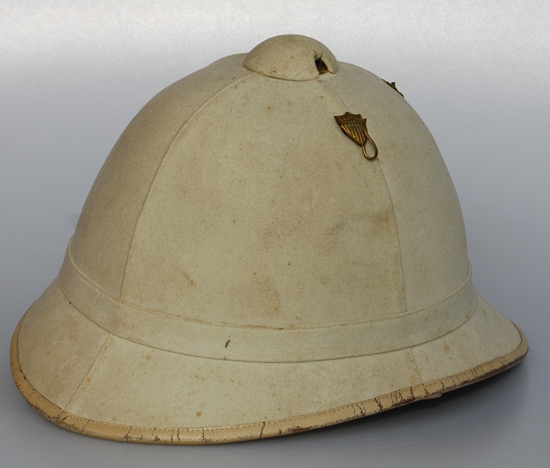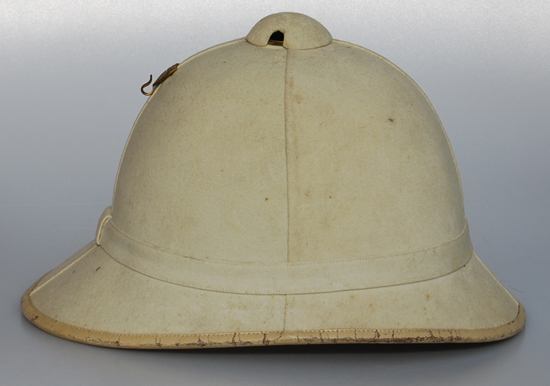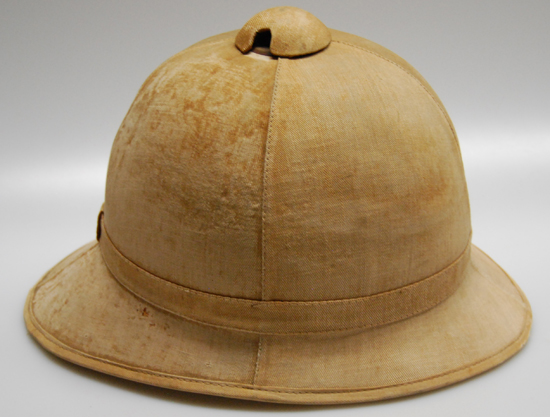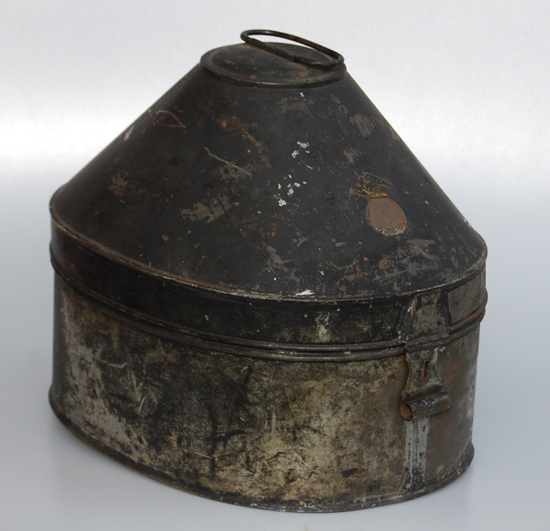While the “sun” or “pith” helmet originated in India its apparent value in protecting a wearer from the dangers of the sun was enough to convince numerous military planners to follow suit and introduce similar helmets. While the French may have adopted a sun helmet in 1878 this was soon followed by the Americans – who adopted a helmet pattern in 1880.
As we have noted, the Model 1880 helmet was the first style of helmet adopted by the American military, and reportedly only some 6,000 were produced. As with the later patterns this helmet features a four-panel construction. One unique variation of this helmet was the officer pattern – which is believed to have been a private purchase item.
Author Gordon Chappell noted in his book Summer Helmets of the U.S. Army, 1875-1910 (Copyright 1967, by the Wyoming State Archives and Historical Department), noted that Captain John F. Rodgers, Military Store-keeper at the Philadelphia Quartermaster Depot, had prepared a pattern for the summer helmet for officers. This included hooks for a chinchain of gilt-brass rings , and that the helmet should have a gilt-brass spike and base plate with alternative ventilator cap.
Chappell wrote, “For ceremonies of some dignity, the gilded brass spike and oak leaf base plate would be worn in place of the white ventilator cap. However, in overall practice this was seldom done.”
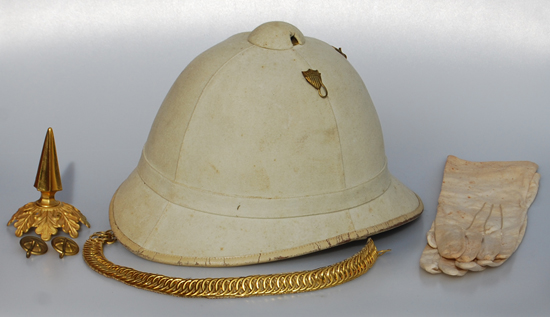
An officer’s version of the M1880 sun helmet. This example came with the original owners summer gloves, as well as the spike/base, side buttons (which appear to have never been used with this helmet) and the chinchain. This helmet was in the collection of noted collector Ed Burka for nearly 50 years (Collection of the Author)
Chappell added that “the spiked helmet was prescribed as the summer helmet for all officers. This meant that not only junior officers of infantry and artillery, but even the field grade officers who in full dress wore colorful plumes, could wear only a spike on the summer helmet.”
This also meant that cavalry officers, who were forbidden to wear the spike on their black helmets had to wear a spike on the spiked summer helmet!
The officer’s versions of the helmets reportedly cost from $7.50 to $10 or higher, and the example in the author’s collection may have been on the higher end as it features a doeskin – a smooth woolen fabric – as the cloth covering, and white leather trim.
The officer’s pattern is notable that it did differ slightly in shape from the enlisted issue model, with Chappell noting that it had “flatter, wider visors, and a shallow and squat body. The brass, of course, was generally gold-plated, with quality varying with expense.”
Authors Mark Kasal and Don Moore, in their book A Guide Book to U.S. Army Dress Helmets: 1872 – 1904 (Copyright 2000 by North Cape Publications, Inc.), suggested that “Summer helmets for officers are generally thought to be of a higher grade of material since the officers had to buy their own. The authors have come to the conclusion that many officers may have owned two summer helmets: one covered in fine white cloth for dress occasions and a second for field use that would be very similar to the enlisted model. The white helmets covered with fine white cloth are usually seen with satin lining which would, of course, make field use very warm and uncomfortable.”
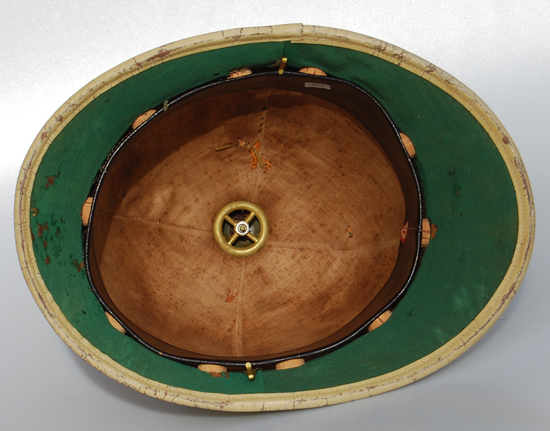
The interior of the officer’s pattern helmet – it shows a higher quality headband, but does not include a silk lining. It could be that this was an option some officers opted for, while others did not (Collection of the Author)
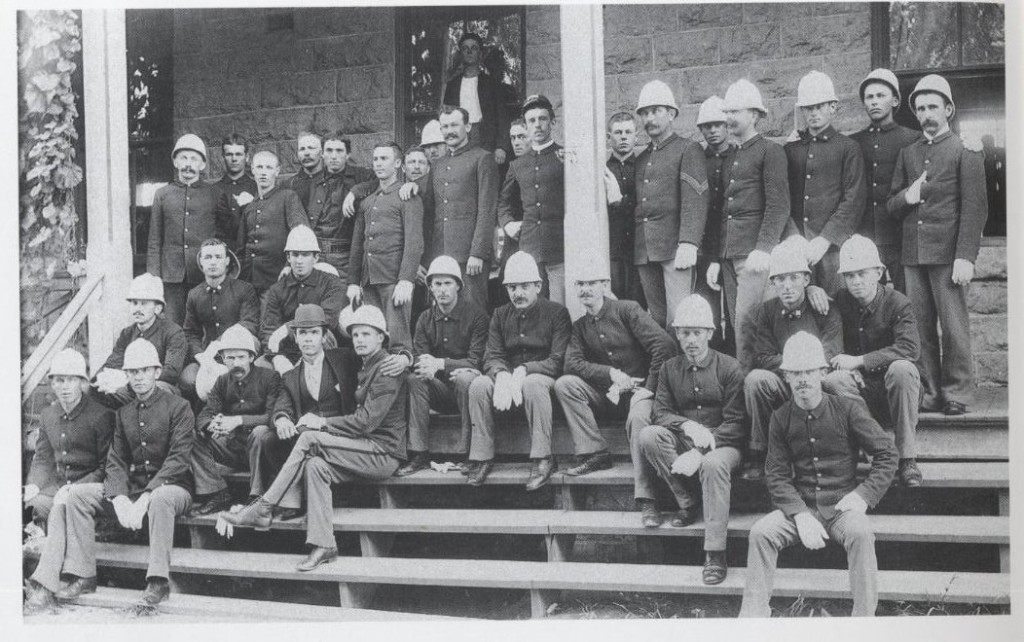
M1880 helmets being worn by soldiers of Battery A, 2nd Artillery, Ft. Riley, Kansas. Date unknown (Photo from a Private Collection)
The above photo shows that the M1880 helmet was in fact issued and from the photo it does appear that officers and enlisted men wore the helmet.
Officers may have bought other accoutrements for their helmets including storage/transport tins. The example in the author’s collection came with a storage tin, which is not all that different from the types of tins used by British officers during the same era.
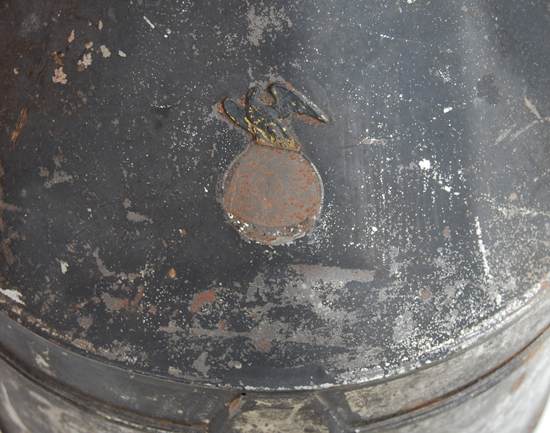
A close up shows the American eagle and possibly the remnants of a name or unit plate (Collection of the Author)
Peter Suciu
October 2014

